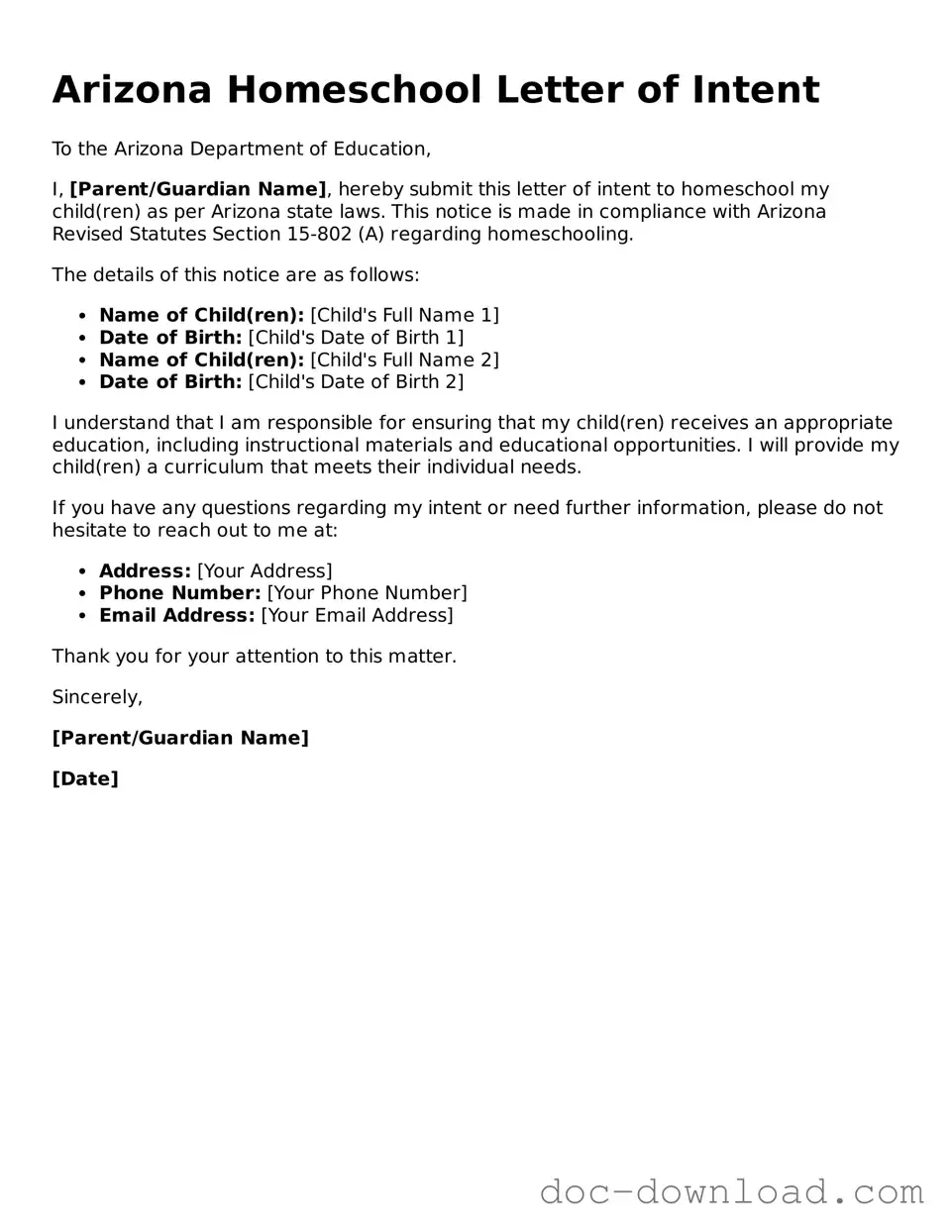The Arizona Homeschool Letter of Intent is similar to the Notice of Intent to Homeschool form used in many states. This document serves as an official notification to the local school district that a parent or guardian intends to homeschool their child. Like the Arizona form, it typically requires basic information about the student and the parent, ensuring that the school district is aware of the educational choice being made.
For parents interested in protecting their ideas, using a comprehensive Non-disclosure Agreement form is essential. This document not only ensures confidentiality but also serves as a foundational step to secure sensitive information shared during business discussions. By filling out an NDA, individuals can safeguard their innovations and maintain a competitive edge in their respective fields.
Another comparable document is the Educational Plan, which some states require alongside the Letter of Intent. This plan outlines the curriculum and educational goals for the child. It provides a framework for the homeschooling process, similar to how the Letter of Intent signals the beginning of that journey. Both documents emphasize the commitment to providing a structured education outside of traditional school settings.
The Affidavit of Intent to Homeschool is also a related document. In some states, this affidavit is a sworn statement declaring the parent’s intention to homeschool. It often includes similar information as the Arizona form, such as the names and ages of the children. The key similarity lies in the formal acknowledgment of the parent’s decision to take on the responsibility of their child’s education.
The Home Education Registration form is another document that shares similarities with the Arizona Homeschool Letter of Intent. This form is used in states that require parents to register their homeschooling efforts with the local education authority. Both documents serve as official notifications, ensuring that the educational authorities are informed about the homeschooling status of the child.
The Certificate of Enrollment is also comparable. In states that require this certificate, it acts as proof that a child is enrolled in a homeschooling program. Like the Arizona form, it helps maintain a record of the child’s educational path and ensures compliance with state regulations regarding homeschooling.
The Curriculum Approval form is another document that some states use. This form may need to be submitted to demonstrate that the chosen curriculum meets state educational standards. Both this form and the Arizona Letter of Intent reflect a commitment to providing a quality education tailored to the child’s needs.
In addition, the Homeschool Notification form is similar in that it serves to notify local school authorities of a family’s decision to homeschool. This document often includes details about the students and the educational approach being taken. It aligns closely with the intent of the Arizona form, which is to keep the school district informed.
The Annual Assessment form can also be compared to the Arizona Homeschool Letter of Intent. This document is often required to demonstrate a child’s educational progress. While the Letter of Intent announces the start of homeschooling, the Annual Assessment shows that the education is ongoing and being monitored, ensuring that the child is meeting learning milestones.
Lastly, the Withdrawal Form from Public School is another document that shares a purpose with the Arizona Homeschool Letter of Intent. When parents decide to homeschool, they often need to submit a withdrawal form to the public school. This form formally ends the child’s enrollment in the traditional school system, similar to how the Letter of Intent initiates the homeschooling process.
